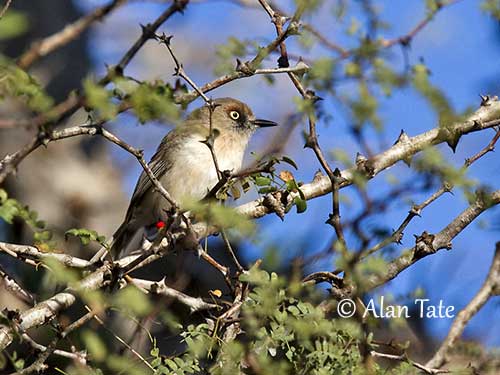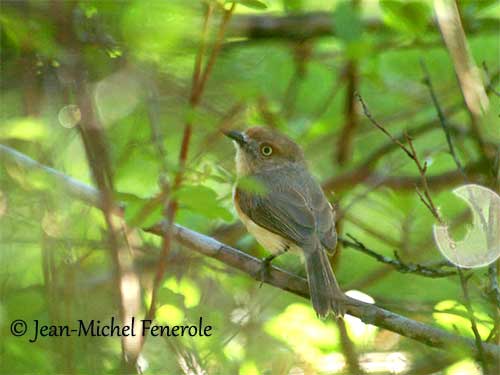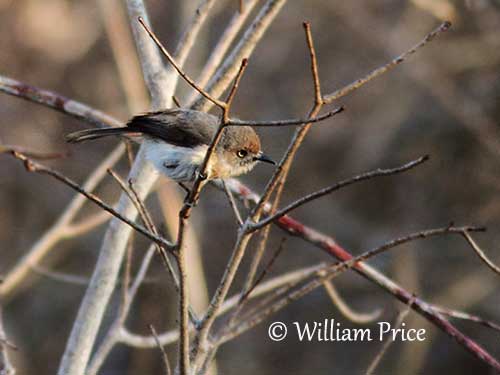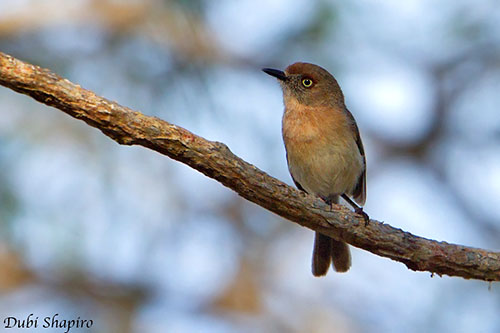
Fr: Newtonie d’Archbold
Ang: Archbold’s Newtonia
All: Braunstirnnewtonie
Esp: Newtonia de Archbold
Ita: Newtonia di Archbold
Nd: Archbolds Newtonia
Sd: archboldnewtonia
Photographers:
Jean Michel Fenerole
Photos d’Oiseaux du monde
William Price
PBase-tereksandpiper & Flickr William Price
Dubi Shapiro
Dubi Shapiro Photo Galleries & Dubi Shapiro's Pictures on IBC
Alan & Ann Tate
AA Bird Photography
Text by Nicole Bouglouan
Sources:
HANDBOOK OF THE BIRDS OF THE WORLD Vol 11 by Josep del Hoyo, Andrew Elliott and David Christie - Lynx Edicions - ISBN: 849655306X
The Birds of Africa: Volume VIII: The Malagasy Region: Madagascar, Seychelles, Comoros, Mascarenes - Par Roger Safford, Frank Hawkins – ISBN: 1408190494, 9781408190494- Editeur: A&C Black, 2013
Birds of Madagascar and the Indian Ocean Islands Par Roger Safford, Adrian Skerrett, Frank Hawkins – ISBN: 1472924118, 9781472924117- Editeur: Bloomsbury Publishing, 2015
Archbold’s Newtonia
Newtonia archboldi
Passeriformes Order – Vangidae Family
INTRODUCTION:
The Archbold’s Newtonia is endemic to Madagascar where it occurs in SW and S of the island. It frequents sub arid thorny scrub and can be seen locally in deciduous dry forest near sea-level.
This species is now in the family Vangidae, but it was formerly in the family Sylviidae that includes the Old World warblers.
The genus Newtonia is endemic to Madagascar, and following some genetic analyses, it is suggested that Newtonia is a product of the same Malagasy radiation from which the Vangidae (vangas) originated. Voice and nest structure also suggest this origin.
The Archbold’s Newtonia is locally common and not globally threatened.
The name of this species pays tribute to Richard Archbold, an American zoologist and philanthropist.
DESCRIPTION OF THE BIRD:
Biometrics:
Length: 12 cm
Weight: 7-8,5 g
The Archbold’s Newtonia has greyish brown upperparts and top of head. The tail has grey-brown, buff-edged rectrices. The flight-feathers are dark grey-brown with buff edges, whereas tertials and upperwing-coverts are greyish-brown.
On the underparts, centre of chin and throat are buffy white. Breast and flanks are mostly cinnamon-buff whereas belly and undertail-coverts are buffy-white. The underwing-coverts are pale cinnamon-buff.

On the head, forehead, eye’s area and sometimes forecrown are dark rufous-brown. The area extending from lores to malar region is dark grey with pale buff mottling. Cheeks and ear-coverts are greyish-brown, sometimes with rufous wash.
The bill is black. The eyes are whitish to pale whitish yellow. Legs and feet are pale grey to blackish.
Male and female are similar.
The juvenile has less rufous on the head. On the wings, the secondaries are edged cinnamon-buff and the greater wing-coverts have broad, rufous-brown tips.
RANGE:
The Archbold’s Newtonia is found in SW and S Madagascar, from S of Morondava, S within narrow band along coast to W of Port Dauphin.

This species is often seen in small groups, probably family parties of 2-5 birds. It sometimes joins mixed-species flocks or remains at the edge of the group.
It is usually fairly vocal, and can be aggressive against other species and even humans.
The breeding habits are unknown, but both adults share the nesting duties.
The Archbold’s Newtonia is apparently sedentary.
It has rather short, rounded wings, indicating that this species only performs short-distance flights.
REPRODUCTION OF THIS SPECIES:
The Archbold’s Newtonia builds a deep cup concealed among low, dense shrubbery, not very far from the ground. One nest was found 95 centimetres above the ground. It is made with long grass stems. Other stems and grass blades often hang on the outside, probably as camouflage. The nest is supported by two fine twigs running through the structure, and it is bound to two others by spider webs.
The female lays 3 reddish-white eggs with pale brown spots. Both adults incubate in turn.
Juveniles can be seen in November/December, and there is a single observation of a juvenile in May.
PROTECTION / THREATS / STATUS:
The Archbold’s Newtonia is locally fairly common in its restricted range. It is confined to the coastal forests of the island.
The species is not currently threatened, and evaluated as Least Concern.

HABITAT:
The Archbold’s Newtonia frequents the spiny forest and adjacent scrubby vegetation, and degraded fringes of deciduous forest in northern part of the range.
This species is usually rare in coastal areas of Euphorbia forest and gallery forests, and absent from mangroves. It is visible from sea-level to 100 metres, although it can be seen occasionally on remote rocky mountainous areas up to 600 metres of elevation.
CALLS AND SONGS: SOUNDS BY XENO-CANTO
The Archbold’s Newtonia calls from concealed perches. It utters a powerful “tekeetee toodee tee” often repeated.
The song is a fast series of loud, low-pitched but rather melodious whistles “pitit-chew whetit chitipew-chewit chitipew-chewchew”. This song can be heard in winter too, as it is not restricted to the breeding season. This species also sings loudly while feeding.
BEHAVIOUR IN THE WILD:
The Archbold’s Newtonia feeds on small arthropods such as Coleopterans, Hemipterans, Isopterans, Lepidopterans and Orthopterans, and also takes spiders.
It forages actively in shrubs and low trees, hopping from branch to branch and gleaning prey from foliage, twigs and bark. It may forage also on the ground. It moves through low, sometimes very dense vegetation.
